WTF is Subject-Predicate-Object? (For Writers and Editors)

The conversation around content and SEO is moving very quickly. Metrics are changing. So are the words we use to describe our work.
In your next job interview or content strategy call, be prepared to answer some new questions about semantic triples.
Try my free semantic triple generator here:
Semantic triples are not new, but they've popped up more in relation to content and SEO lately. You'll also see subject-predicate-object constructions mentioned alongside them (and for ease of reading, I'll abbreviate that to SPO).
TL;DR: The main difference between semantic triples and subject-predicate-object constructions is that semantic triples is a technical term (describing the way machines store information about relationships), and SPO is the grammatical pattern we use to write about them.
How do we structure subject-predicate-object statements?
Here's the structure for a statement: entity / relationship / entity.
For example:
- Bob / works with / Samantha
- Apple / makes / iPhones
- London / is the capital city of / the UK
Entities can be people, places, dates, products, companies... any unique 'thing' that a search engine or an LLM needs to identify.
I grabbed this image from the W3C article on semantic triples because I think it's the best illustration of what I'm going to talk about.
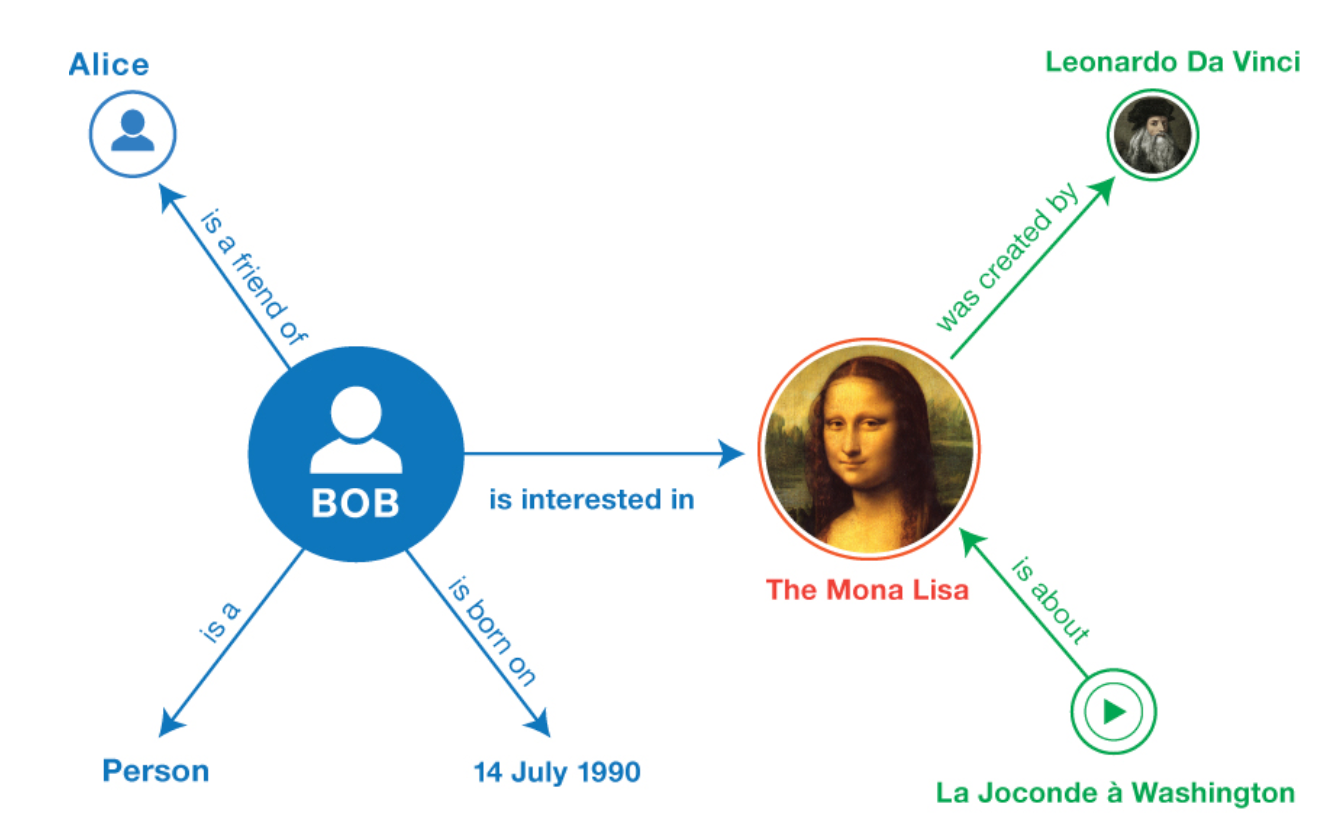
Here's the same information structured in SPO statements:

Both are examples of a set format for showing how entities (things) are connected.
Why do writers need to know about semantic triples?
Writing semantic triples with clear SPO constructions makes your content more likely to be understood by search engines and AI systems.
That impacts the visibility your content will achieve in AI search and 'classic' organic search results.
So using SPO can increase the likelihood that your content will be chosen as a relevant result in either (or both).
How Google uses semantic triples
Semantic triples are used to store relationships in Google's Knowledge Graph. You can see the Knowledge Graph in action when you search for a celebrity:
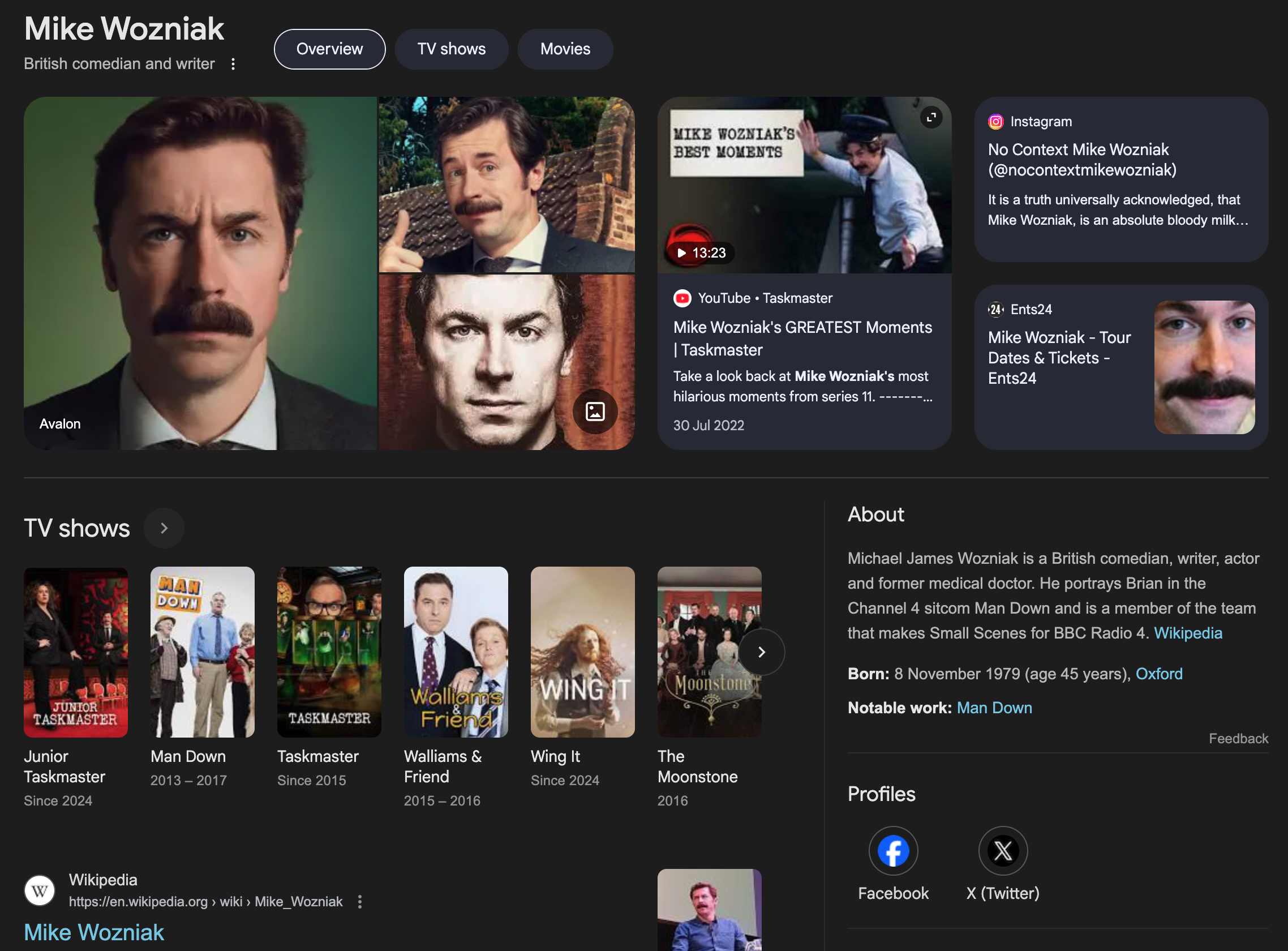
Google knows enough about different entities to be able to match up the correct people, places, dates, and social media profiles. It has seen enough connections between the entities to know how they're related.
Clearly stating the connections between different things can also help you to get featured snippets and AI Overviews.
If I Google, "Where is Nike UK headquarters?", the AI Overview provides a perfect semantic triple: Nike UK headquarters / are located in / London.
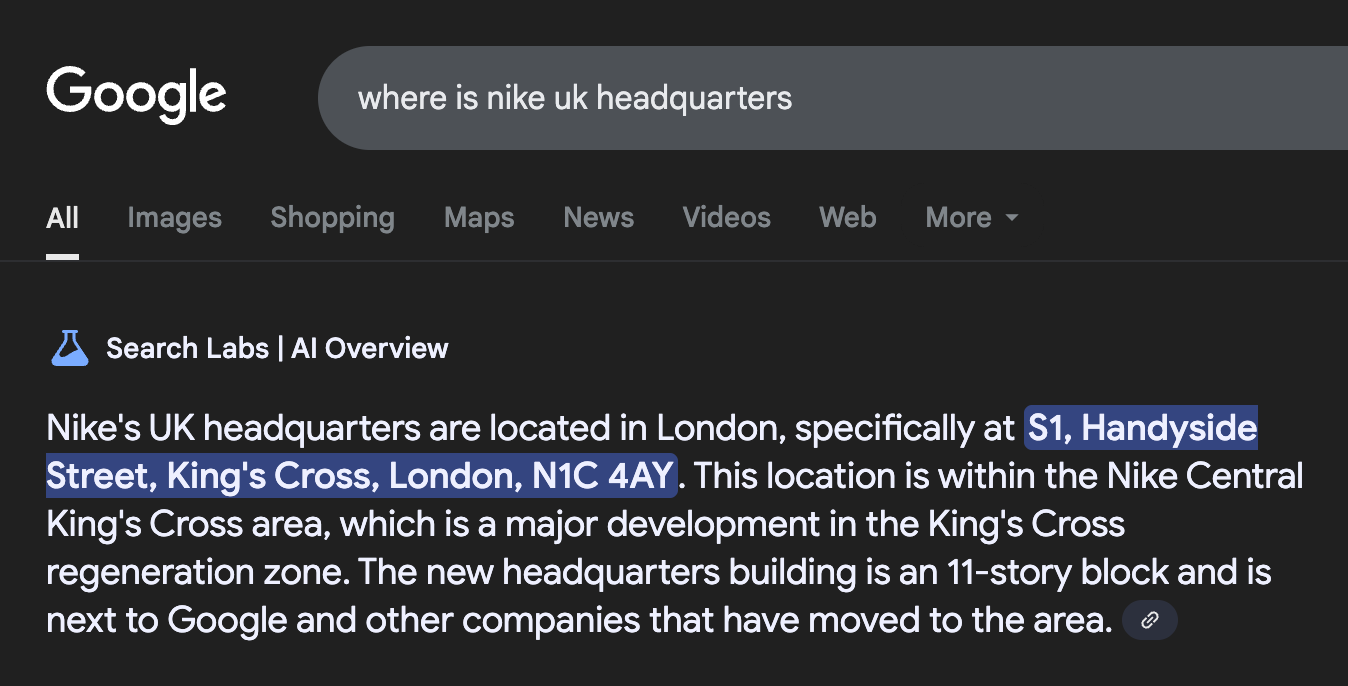
To expand on this slightly, it might help to explain that sections like this are called "fraggles".
Fraggles are fragments of a page that are combined with other fragments to provide an AI answer.
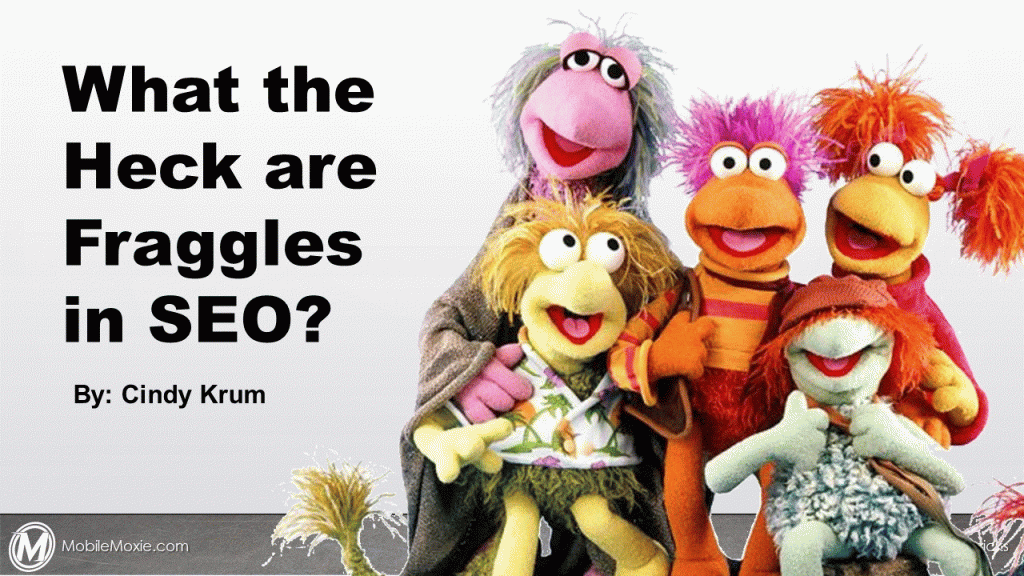
Providing a clear SPO statement is the best way to improve your chances of being included in a fraggle because Google can quickly locate the relevant passage in your content.
Finally, semantic triples help you to establish topical authority.
An expert on a given subject will know how different concepts and terms are related and will be able to clearly explain those relationships.
To demonstrate, look at Shopify. It has built topical authority around ways to make money on social media, as you can see from this Semrush* topic overview:
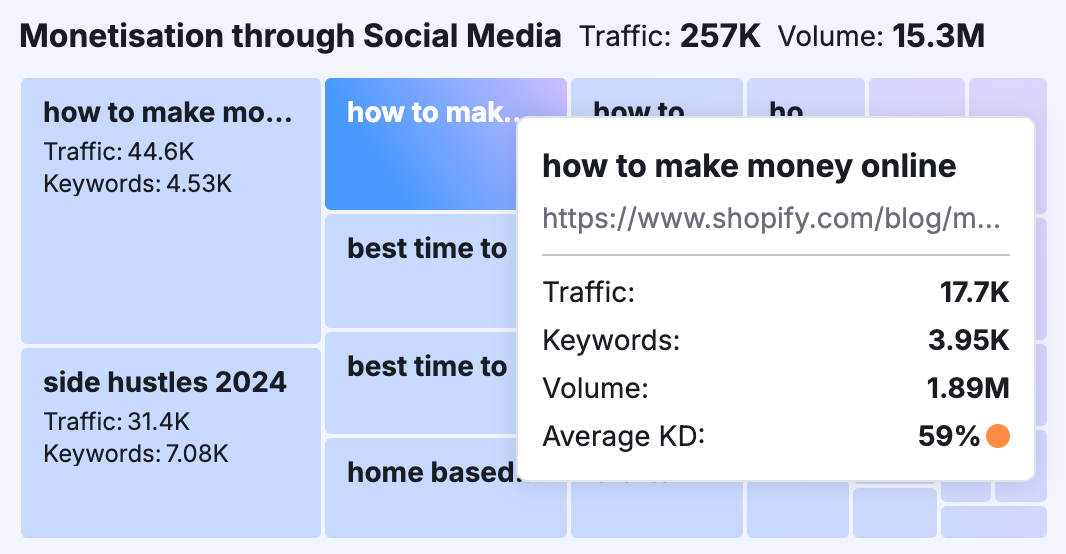
You can see there are a bunch of related concepts here: making money online, side hustles, home based business ideas, and a few topics aimed at content creators.
It's important to remember that you don't have to sound like a robot when incorporating semantic triples. In its article on making $1,000 fast, Shopify uses subject-predicate-object constructions in a conversational way.

Semantic triples for LLMs and AI Search
LLMs are gigantic prediction machines. They piece together answers by predicting the words that are most likely to follow in a sentence, and they map entity relationships to understand context.
Strong SPO statements help LLMs find patterns in your content, which means they're more likely to find the right answer as they split the page into passages.
Going back to the example of making money online: let's say we ask ChatGPT about making $1,000 quickly (with web search turned on).
The very first article it uses as a source is the same Shopify article that ranked well in organic results (the highlighting here was added when I hovered over the sources):
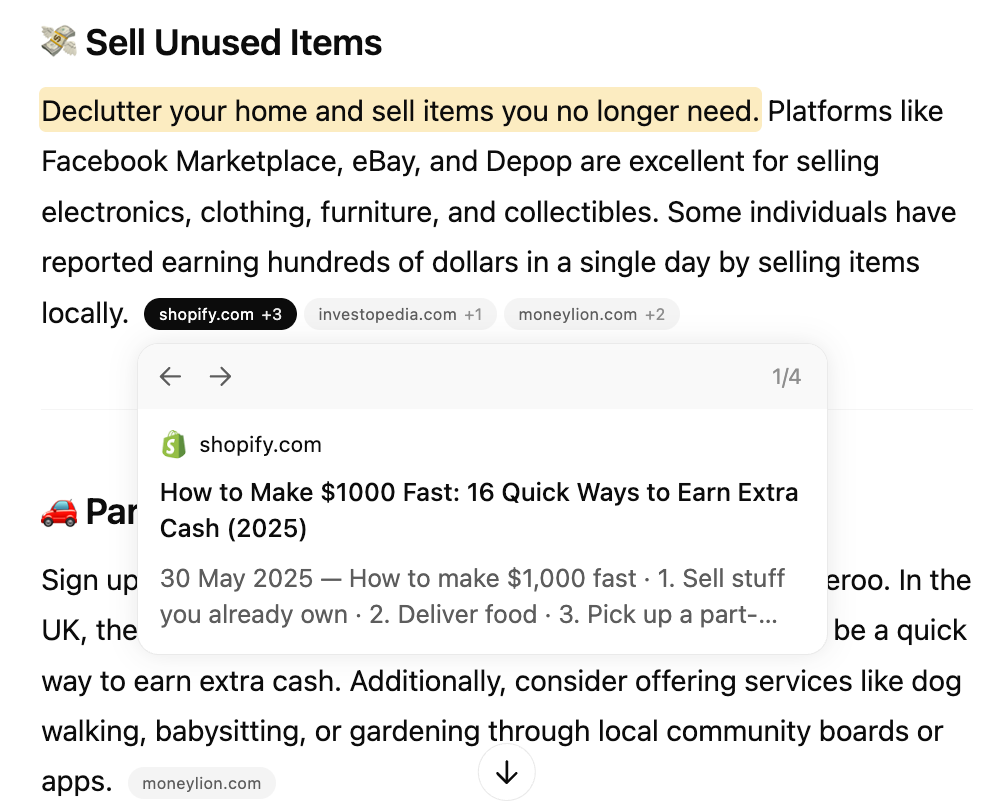
Without going too far off-topic (you can read more here), LLMs use vector embeddings. That means (in basic terms) that LLMs turn words into numbers to understand the relationship between them.
LLMs are good at understanding unclear language. But the clearer the text, the more likely it is to align with the way the user asked their question.
And since we're moving towards optimizing for questions, this is a powerful way to get our content to appear as a match.
Final tip: read about relevance engineering
Writing clearly is not a new or revolutionary technique. The terms we're using to describe clear, high-quality content are shifting, and that's why I wanted to write this post.
There is one more term I want to mention in this context.
Last week, iPullRank published an article on relevance engineering, which was new to me. I agree with the principle behind this.
"Engineering" means we need to build relevance into content as we write it. It's not something you can tweak by adding keywords later.

And if you're already writing for humans, you're probably doing all the things you're going to need to do to engineer your content in the right way:
...The future of search is retrieving relevant content that’s wrapped up in a neat, no-click package and served directly to the searcher (essentially featured snippets on steroids).
How do I use subject-predicate-object in content?
There's a good chance you're using SPO statements already, so don't panic too much.
- Technical writers understand how to define and link ideas
- Experienced content marketers know how to explain complicated steps in clear language
- Editors know how to clarify statements to make them sharper
My #1 recommendations in addition to that would be:
- Build authority around the topic every time you write.
- Prioritize EEAT and information gain. Aim to define new relationships between entities - relationships Google has never seen before.
- Understand your topic cluster. Bring semantic keywords and related terms into your piece to form bridges between articles.
- Use internal links to join the dots for readers. This will help you to cover related terms in the cluster, strengthening your authority for the entire topic.
Use my free generator to create semantic triples that you can adjust.
As an alternative, I like to use Claude to suggest places where I can define terms more clearly. As always, I recommend this as a backup or a final check.
Here's my prompt:
Scan this article and suggest 5 opportunities to explain terms more clearly using subject-predicate-object constructions.
Review the results and implement a couple of its suggestions if they make sense.
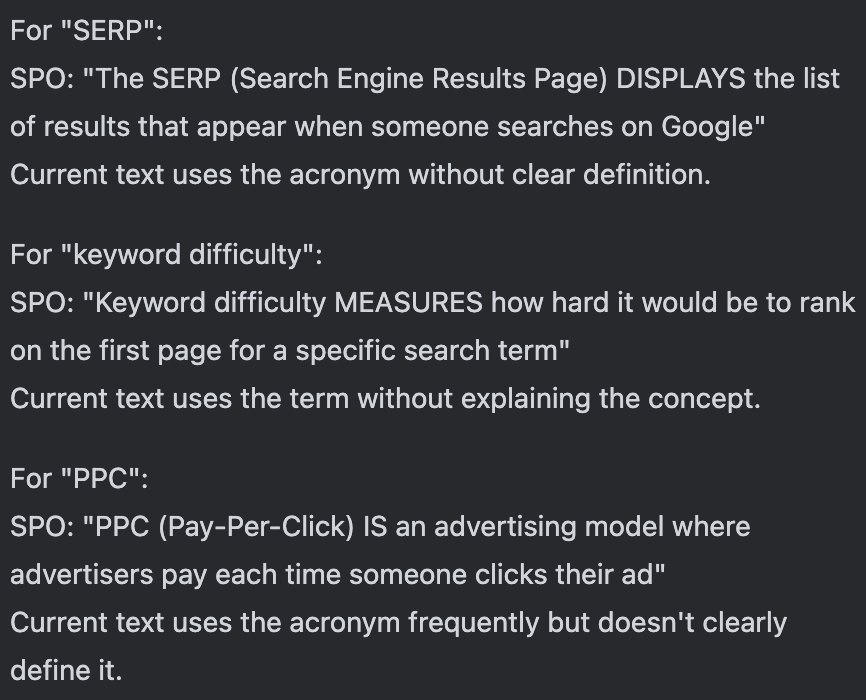
We're back to "quality content"
Everything I've talked about here has centered on writing for machines. But I could have written the same article about writing for humans, and most of the advice would have been the same.
Writing for a new type of search could be a positive move towards high-quality, high-effort content and a shift away from thin, crappy articles produced at speed.
Either way, using SPO and semantic triples helps with clarity, which benefits all of our readers in the end.
*Semrush is my client. I don't get any kind of kickback in exchange for mentioning Semrush here!




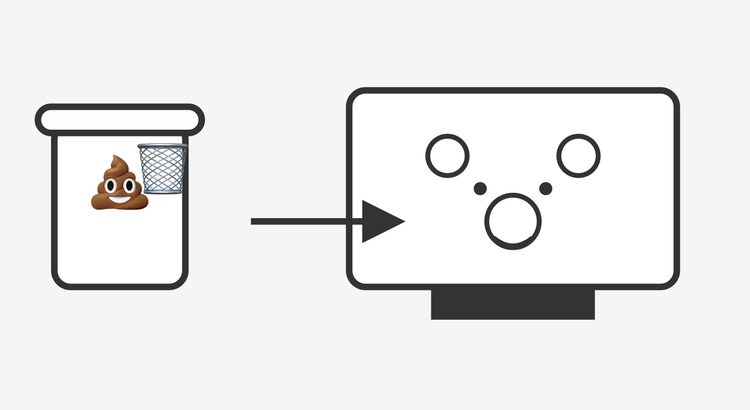

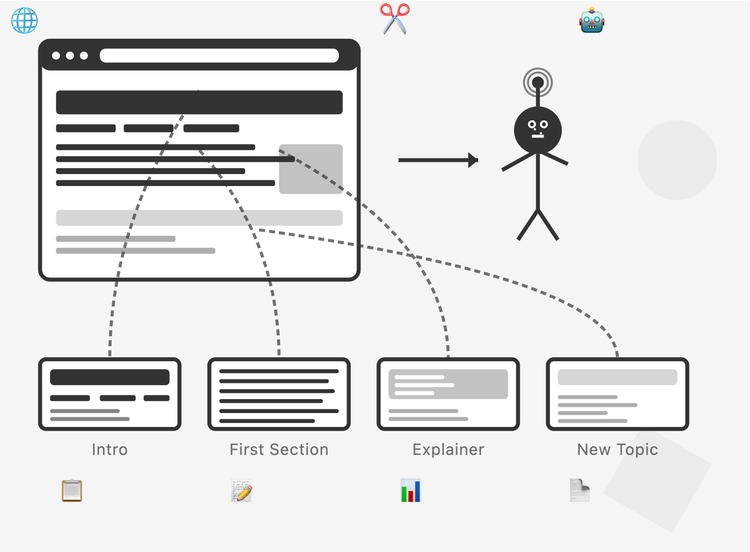
Comments ()